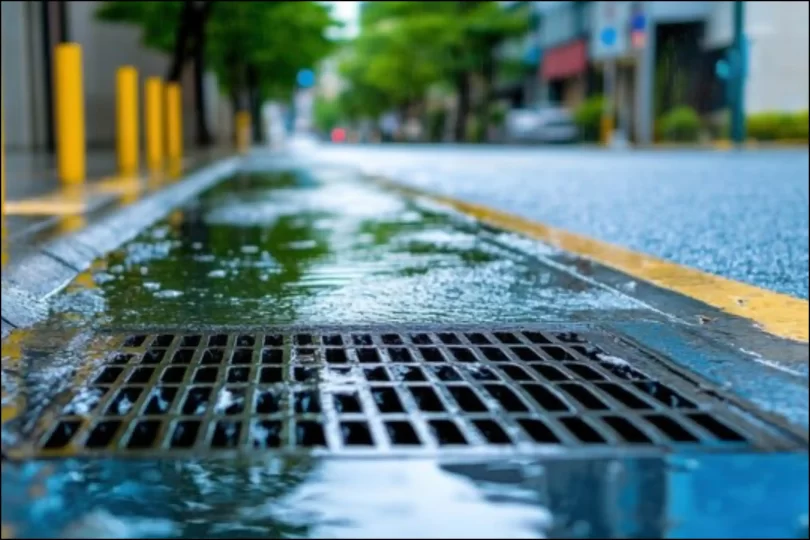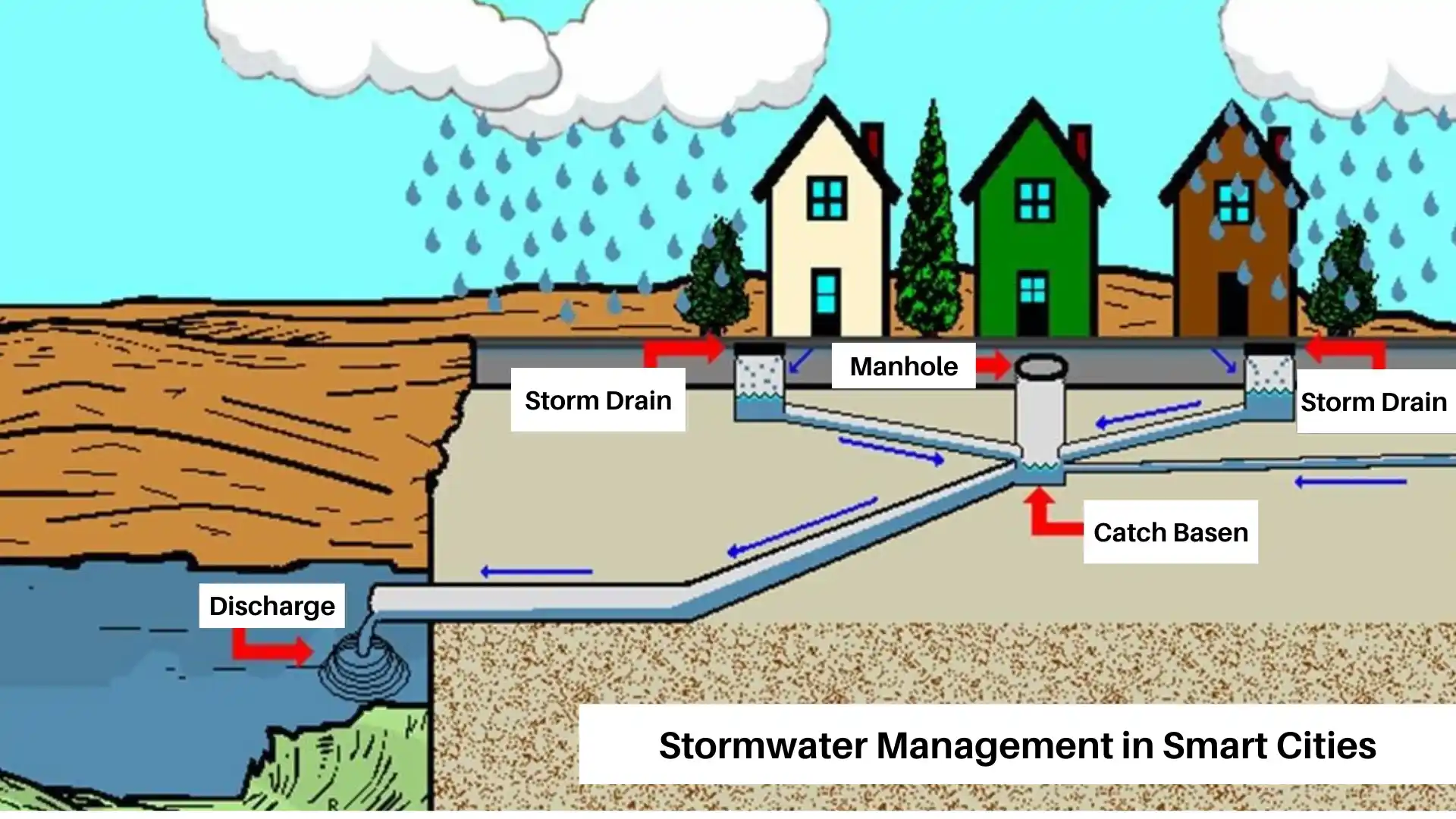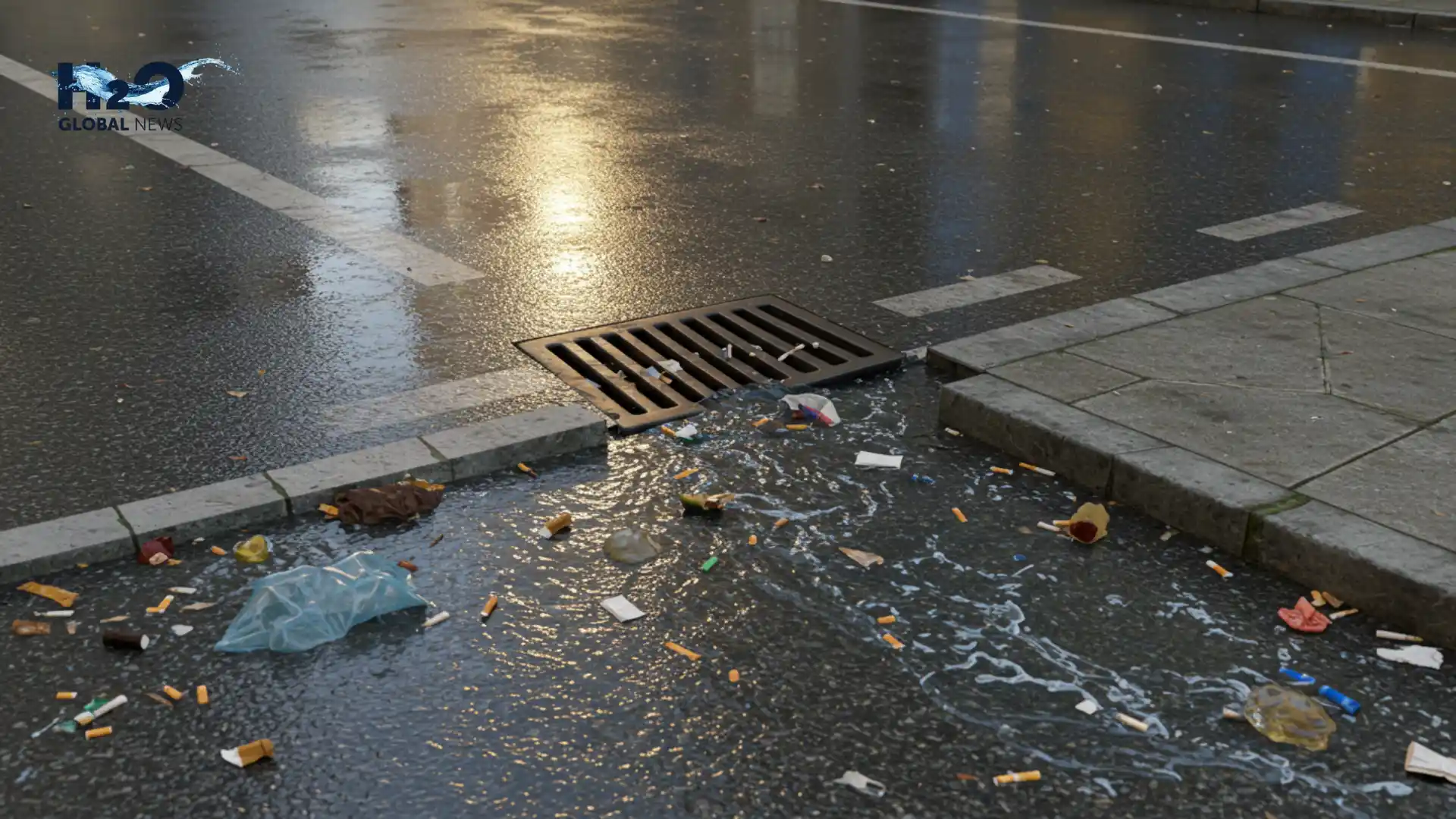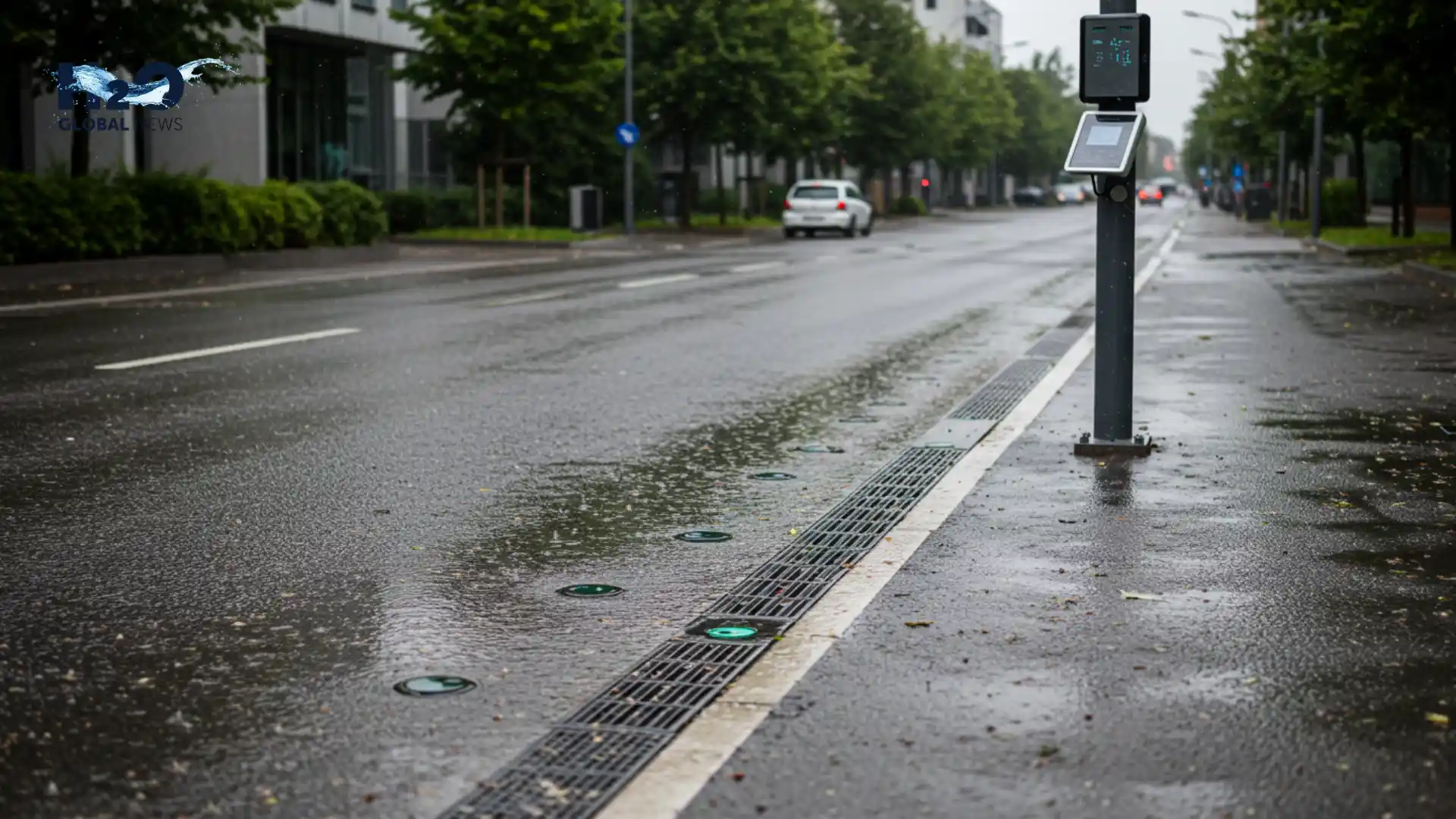Imagine a city that handles heavy rains without flooding streets, polluting rivers, or overwhelming drains. In a smart city, this isn’t just a dream, it’s a part of the plan. As cities grow, so does the problem of urban stormwater. This stormwater runoff can carry oil, litter, and even plastics straight into rivers and oceans.
That’s why stormwater management is so important. It’s about guiding rainwater safely, reducing pollution, and protecting both cities and nature. In this guide, we’ll break down what stormwater management in smart cities means, why it matters, and how smart, sustainable solutions are helping cities handle rain the right way.
What Is Stormwater Management?
Stormwater management is the process of controlling and using rainwater (runoff) in ways that reduce pollution, flooding, and erosion. In natural settings, rainwater seeps into the ground or evaporates. But in cities, hard surfaces like roads and buildings stop water from soaking into the soil. Instead, it rushes over surfaces and picks up dirt, chemicals, and plastic waste, often ending up in local waterways.
A good stormwater management system slows down, filters, and safely redirects water. It includes everything from simple stormwater drainage systems to advanced stormwater technologies that monitor water quality in real time.
The Hidden Impact of Rainwater in Cities
In urban areas, rainwater doesn’t soak into the ground the way it does in nature. Instead, it flows across roads, rooftops, and pavements, becoming what we call stormwater runoff. As it moves, this water picks up all sorts of harmful things, like:
- Chemicals from cars
- Plastic waste and litter
- Fertilizers and pesticides from lawns
- Oil, grease, and heavy metals from streets
All of this ends up in drains, which then carry the polluted water straight into rivers, lakes, and oceans. Stormwater runoff is one of the main ways plastic and toxins reach the sea, putting marine life and ecosystems at risk. That’s why managing water runoff is now a key part of designing modern, healthy cities.
Smart Cities Taking the Lead in Stormwater Solutions
Cities around the world are finding new and creative ways to manage stormwater while also improving daily life:
- Singapore
Uses smart sensors and rain gardens across the city. Their “ABC Waters Programme” blends nature with technology to manage runoff and create green, welcoming public spaces. - Copenhagen
Redesigned its streets into “cloudburst roads” that help direct rainwater into parks and underground storage during storms, reducing the risk of flooding. - Los Angeles
Adds rainwater harvesting systems to rooftops, schoolyards, and public spaces—helping to reduce runoff and save water at the same time.
Sustainable Stormwater Solutions for Smart Cities
Smart cities use data, sensors, and sustainable infrastructure to solve everyday problems, including how to handle rainwater. Let’s look at some sustainable stormwater management methods that are changing the game.
1. Green Stormwater Infrastructure (GSI)
Green stormwater infrastructure is a natural process that absorbs and filters water. These eco-friendly setups are now key parts of smart city infrastructure. Examples include:
- Green roofs: Plants on rooftops absorb rainwater and reduce runoff.
- Permeable pavements: Special surfaces allow water to soak through instead of running off.
- Rain gardens: Shallow planted areas that collect and clean runoff from roofs and roads.
- Bioswales: Landscaped trenches that slow and clean water as it flows through.
These methods not only manage runoff, they also cool cities, improve air quality, and add green space.
2. Smart Drainage Systems
Modern stormwater drainage systems are now equipped with sensors and automated controls. These systems:
- Detect rainfall levels
- Redirect excess water in real time
- Prevent overflows
- Collect data to improve city planning
This kind of stormwater technology helps cities respond faster to storms and protect vulnerable areas.
3. Rainwater Harvesting
Rainwater harvesting, saving rainwater in barrels or tanks, helps prevent excess water from running off and can be used for simple tasks like watering the garden, flushing toilets, or cooling your home. It’s an easy and helpful way to manage rainwater, especially in places where water is often in short supply.
The Role of Green Infrastructure in Stormwater Management
EPA research on Low Impact Development (LID), also known as green infrastructure, shows these nature-based systems (e.g., rain gardens, permeable pavement, green roofs) not only reduce runoff and filter pollutants but also restore natural water flows and habitat functions in developed areas.
By including nature in our city plans, we can:
- Improve water quality
- Create habitats for birds and insects
- Cool down urban “heat islands”
- Make cities more attractive and livable
The shift from traditional pipes to green stormwater infrastructure is helping cities adapt to climate change while becoming more sustainable.
Stormwater Management and Smart Cities
In a smart city, every drop counts. With tools like real-time data, predictive weather models, and AI-controlled valves, cities can now:
- Forecast floods
- Control urban stormwater before it causes damage
- Reduce plastic and chemical pollution
- Reuse water where needed
Smart city infrastructure doesn’t replace traditional systems, it builds on them to make cities more efficient and eco-friendly.
Case Studies: Real-World Stormwater Solutions
Across the world, cities are finding ways to handle stormwater by blending urban design with natural systems. In several parts of Europe, researchers have examined low-lying coastal cities that have experienced repeated flooding over the past few decades. They discovered that rapid urban growth, paved landscapes, and city expansion were key reasons why so much rainwater was turning into runoff. Their solution was simple but powerful, manage stormwater based on watersheds, not just pipes. A watershed is an area where all water drains into the same stream or river. By planning around the natural flow of water, cities can slow runoff, reduce flood risk, and protect water quality.
In North America, the Low Impact Development (LID) approach uses features like rain gardens, green roofs, and permeable pavements to handle stormwater where it falls. These methods help the land absorb rain naturally, just as it would before urban development.
Meanwhile, China’s Sponge City concept takes a similar route. Cities are being redesigned with more open green spaces, wetlands, and water-absorbing surfaces, allowing rainwater to be stored, cleaned, and reused, rather than causing floods or pollution.
All of these projects share a common goal: to reduce runoff, improve water quality, and view rain not as waste, but as a valuable resource.
Conclusion
Stormwater management is no longer just about drains and gutters, it’s about rethinking how cities deal with water from the ground up. In smart cities, the focus is on sustainability, nature, and technology working together. From green roofs to rain gardens and real-time data, these solutions help us build urban spaces that are safer, greener, and ready for future challenges.
FAQs:
Why is stormwater management important?
Because runoff carries trash, chemicals, and plastics into waterways, damaging ecosystems and increases flood risks.
What is green stormwater infrastructure?
It includes natural solutions like rain gardens, green roofs, and permeable pavements that manage water sustainably.
How does stormwater runoff carry plastics to the sea?
As rain flows over streets, it picks up plastic litter and sends it through drains into rivers and oceans.
How does stormwater technology work?
It utilizes sensors, valves, and data tools to track, control, and manage water flow in real-time.
Can stormwater be reused?
Yes. With proper filtration, stormwater can be reused for irrigation, cleaning, or flushing toilets.











